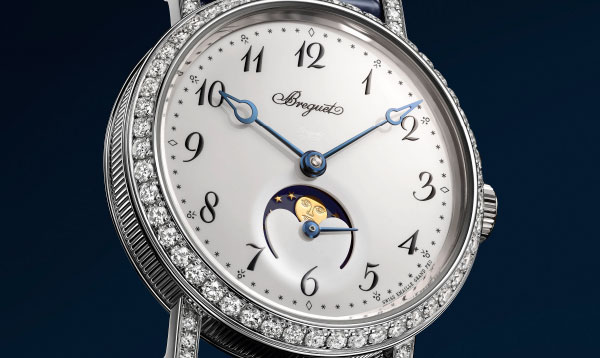
The new Geophysic True Second is equipped with Jaeger-LeCoultre’s Gyrolab balance-wheel.
The Constant Escapement by Girard-Perregaux simultaneously regulates energy and time.
Chronometry, the art of producing accurate watches, has always been a driver in the watch industry. The return of independent chronometry contests and the growing number of brands calling upon the Swiss Official Chronometer Testing Institute (COSC) prove that the subject is as relevant as ever. Various solutions designed to improve rate are taking new directions that affect every single movement organ.
Brain
A movement is a system based on various forms of interdependence. Everything within it contributes to the accurate measurement of time and the balance-spring is its brain. Alongside the standard spiral shape, various alternative approaches to its geometry, invented during the effervescent 18th century, are currently being reintroduced. The cylindrical balance-spring is used by Bovet, Montblanc and Jaeger-LeCoultre, while the latter even also works with a spherical balance-spring. Such options enhance precision because these springs are better centered and more carefully designed. In parallel, the double balance-spring is a specialty of H. Moser & Cie and is also used by Breguet and Laurent Ferrier. Their two almost twin springs mutually compensate for their respective errors in real time. Finally, to enhance the smooth operation of the balance-spring, its terminal curves are artfully shaped, just as De Bethune has been doing right from the start. The shape of the far ends of the spring governs its equilibrium and its energy consumption, both of which play a key role in its regularity.

Thanks to the controlled suppleness of silicon, the Constant Ulysse Anchor Escapement by Ulysse Nardin is one of the extremely rare constant-force escapements.
A cylindrical balance-spring coupled with a non-annular balance with inertia-blocks contribute to making the Braveheart by Bovet the epitome of superlative chronometry.
Wheel
The balance-wheel is coupled with the balance-spring and serves as an inertia flywheel for the latter, both bearing and regulating the force. Smaller and lighter versions are more accurate because they have only a minor impact, but they are also easily perturbed. Wider and heavier ones maintain their inertia and are thus protected from shocks, but they are also energy-hungry. An intermediate solution consists in reinventing the wheel with non-annular balance-wheels. At De Bethune, Bovet and Jaeger-LeCoultre, these open arcs of a circle store energy efficiently without swallowing up too much, while delivering a little known positive side-effect: they have a greater coefficient of air penetration, which further reduces their consumption – for in watchmaking, energy regulation is a decisive factor.

The double balance-spring is key to the chronometry of Laurent Ferrier tourbillon models.
The Rolex Chronergy escapement, lighter and ensuring reduced friction, has been fitted in the new Day-Date 40 mm.
Force
Watchmakers have known for centuries that the force of the mainspring, contained in the barrel, is not constant. Very powerful when fully wound and weak when almost entirely let down, it powers the gear train in irregular fashion. Yet the balance-wheel requires stable energy to operate effectively – hence the early invention of the fusee and chain system that acts like an automatic gearbox. Two recent alternatives to this complex solution have been introduced. Greubel Forsey uses fast-rotating mainspring barrels that transmit their energy in a more linear manner. Even more recently, energy has been reincorporated into the heart of the escapement with the arrival of two authentic constant-force escapements. The Constant Escapement by Girard-Perregaux and the Constant Ulysse Anchor Escapement by Ulysse Nardin simultaneously measure time and even out the energy they transmit to the balance-wheel, a technical feat made possible by the supple nature of silicon.
Counting
The escapement is historically the main field of chronometry research. The Swiss lever system definitely rules the roost, and sometimes merely improving that which already exists is enough to achieve worthwhile results. Simply making a lighter pallet-lever and escape-wheel reduces the escapement’s energy consumption and thus improves its chronometry. Such is the approach adopted by Rolex. Its Chronergy escapement is a lighter version of the Swiss lever escapement with a cut-out design. Its pallet-lever features optimized geometry, thereby diminishing the inevitable friction with the escape-wheel – the tiny point of contact where most of the energy and precision is generally lost. This means that the Caliber 3255 powering the new Day-Date 40 mm and fitted with the Chronergy escapement operates within precision tolerances twice as exacting as those of the COSC. In addition, its reliability is such that Rolex has extended the warranty for this model to five years. The exact areas of a movement where chronometry can be optimized have not changed in 300 years, but the ways of achieving this are constantly shifting.






